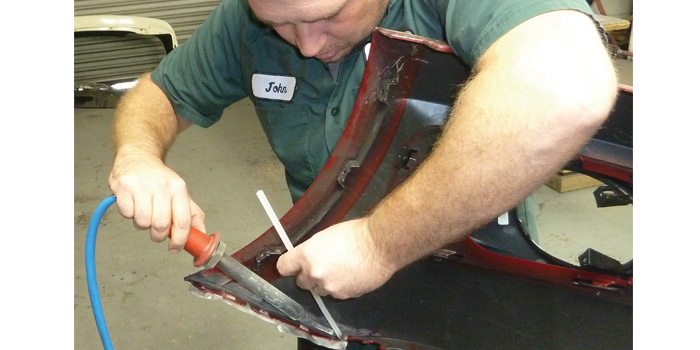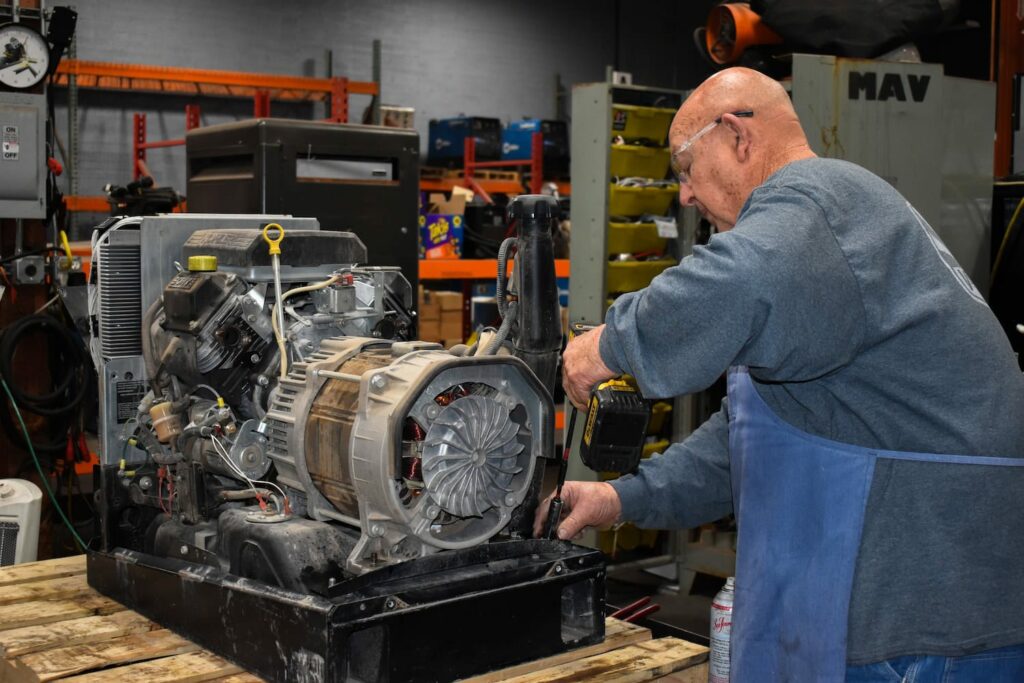Typical Welding Repair Service Issues and Just How to Address Them Successfully
Welding repair services usually come across a variety of issues that can endanger the stability of the final item. Common problems include inadequate penetration, porosity, and misalignment, among others. Each problem presents special difficulties that call for particular methods for resolution. Recognizing these issues is essential for welders aiming to enhance their skills and end results. This conversation will certainly check out these typical welding repair work problems and reliable approaches to address them.
Inadequate Infiltration
Inadequate penetration takes place when the weld steel stops working to completely fuse with the base material, resulting in weak joints and potential architectural failures. This issue usually stems from inadequate warm input, incorrect electrode angle, or incorrect welding speed. Welders may encounter inadequate penetration because of a mistake of the needed parameters for a certain product thickness or type. Additionally, contamination on the base material's surface area can hinder reliable bonding, intensifying the trouble. To resolve insufficient infiltration, welders must ensure proper settings on their tools and preserve a clean job surface area. Normal evaluation of welds is suggested to determine any deficiencies early, enabling timely adjustments and the avoidance of jeopardized architectural integrity in welded settings up.
Porosity
Porosity is an usual problem in welded joints that manifests as small gas bubbles trapped within the weld steel. This flaw can jeopardize the stability of the weld, causing lowered stamina and possible failing under stress. Belgrade Welding. Porosity generally arises from contamination, moisture, or incorrect welding methods, which enable gases to get away right into the molten weld pool. To resolve porosity, welders need to guarantee correct surface area prep work, preserve a tidy workplace, and make use of suitable welding parameters. Additionally, choosing the best filler product and protecting gas can minimize gas entrapment. Regular examination and screening of welds can help recognize porosity early, assuring prompt rehabilitative activities are taken, therefore protecting the quality and reliability of the bonded framework
Imbalance
Misalignment in welding can develop from different factors, including incorrect configuration and thermal development. Comprehending the source is vital for efficient resolution. Several adjustment techniques are available to realign parts and assure structural stability.
Reasons for Imbalance
Welding misalignment typically originates from a range of underlying issues that can jeopardize architectural honesty. One primary cause is inappropriate fit-up of parts before welding, which can lead to gaps and uneven surface areas. Variations in thermal expansion throughout the welding process can additionally lead to distortion, specifically if the products being signed up with have various coefficients of development. Additionally, insufficient fixturing and securing may fall short to hold parts firmly in location, leading to movement throughout welding. Improperly conserved devices, including welding devices and devices, may present disparities in the weld bead, further contributing to misalignment. Driver error, stemming from inadequate training or experience, can also play a substantial role in creating misaligned welds.

Correction Techniques Available
Attending to imbalance effectively needs a combination of corrective techniques tailored to the details issues available. One usual method is the usage of jigs or fixtures to hold components in the correct position throughout welding, making sure consistent alignment. Furthermore, pre-heating the products can help in reducing distortion and improve fit-up. For significant imbalance, mechanical adjustment methods, such as making use of hydraulic jacks or clamps, can be employed to correct the placement before welding. Post-weld warmth treatment might also be essential to relieve stress and anxieties created by misalignment. Ultimately, cautious examination and change throughout the setup stage can avoid imbalance concerns from becoming significant problems, advertising a smoother welding process and improving overall structural honesty.
Distortion
Distortion is a common difficulty in welding that can arise from different aspects, consisting of unequal heating and cooling. Comprehending the root causes of distortion is crucial for applying reliable prevention methods. Resolving this concern not only boosts structural integrity yet also boosts the total quality of the weld.
Sources of Distortion
When subjected to the intense warmth of welding, materials frequently undertake changes that can result in distortion. This phenomenon primarily develops from thermal development and tightening throughout the welding process. As the weld location warms up, the material increases; upon cooling, it contracts, which can develop interior stress and anxieties. On top of that, irregular heating throughout a work surface can aggravate these tensions, leading to bending or bending. The kind of material additionally plays a substantial role; metals with differing thermal conductivity and coefficients of growth may react in a different way, leading to uncertain distortions. Moreover, inadequate joint style and insufficient fixturing can add to imbalance during welding, enhancing the chance of distortion. Comprehending these reasons is crucial for efficient welding repair work and avoidance approaches.
Avoidance Techniques
Reliable avoidance techniques for distortion during welding emphasis on controlling heat input and making certain proper joint layout. Maintaining a regular heat input assists to lessen thermal growth and contraction, which can cause distortion. Utilizing strategies such as preheating the workpiece can also lower the temperature level slope, promoting consistent heating. In addition, selecting proper joint designs, such as T-joints tweco or lap joints, can improve security and minimize tension concentrations. Carrying out proper fixturing to protect the workpieces in area better aids in keeping alignment throughout the welding process. Lastly, staggered welding sequences can distribute heat a lot more uniformly, avoiding localized distortion. By using these techniques, welders can significantly reduce the probability of distortion and improve Your Domain Name the general quality of their welds.
Splitting
Fracturing is a typical concern come across in welding repairs, often resulting from numerous factors such as improper cooling prices, product option, or inadequate joint prep work. The event of fractures can significantly jeopardize the integrity of the weld, leading to possible failings throughout operation. To address this concern, welders should initially evaluate the origin, making sure that products work and properly selected for the details application. Additionally, controlling the air conditioning rate throughout the welding procedure is crucial; fast cooling can generate tension and cause splitting. Correct joint layout and preparation additionally contribute to minimizing the danger. Carrying out these strategies can improve weld top quality and sturdiness, ultimately reducing the probability of splitting in completed weldments.

Insufficient Combination
A considerable issue in welding repair services is insufficient combination, which occurs when the weld steel does not properly bond with the base product or previous weld passes - Montana Mobile Welding and Repair Belgrade Welding. This defect can bring about weak points in the joint, potentially jeopardizing the honesty of the bonded framework. Factors adding to insufficient combination include insufficient heat input, inappropriate welding strategy, and contamination of the surface areas being signed up with. To resolve this concern properly, welders must ensure appropriate pre-weld cleansing and surface area prep work, in addition to adjust their welding parameters to attain appropriate infiltration and blend. Normal examination during the welding procedure can likewise help identify incomplete blend early, permitting prompt corrective procedures to boost the general top quality of the weld
Overheating
While welding repair work can improve architectural stability, overheating offers a significant obstacle that can bring about material deterioration. Extreme warm during welding can change the mechanical properties of metals, leading to minimized toughness, increased brittleness, and bending. This sensation is especially important in high-stress applications where structural reliability is extremely important. Determining overheating can involve aesthetic assessments for discoloration or distortion, as well as monitoring temperature throughout the welding procedure. To alleviate the dangers related to overheating, welders need to utilize ideal strategies, such as managing warmth input, adjusting traveling speed, and using suitable filler products. Additionally, carrying out pre- and post-weld warm treatments can aid restore material homes and improve the overall top quality of the fixing, making certain long-term performance and security.
Often Asked Concerns
What Are the Typical Signs of a Welding Flaw?

Exactly How Can I Evaluate My Welds for Quality?
To evaluate welds for high quality, one can use visual evaluations, ultrasonic testing, and radiographic methods. Each strategy ensures structural stability, determines flaws, and validates adherence to specified criteria, inevitably boosting the integrity of the bonded joints.
What Security Preventative Measures Should I Take While Welding?
When welding, one should focus on safety by wearing appropriate personal protective equipment, ensuring appropriate air flow, protecting flammable products away, maintaining a clean workspace, and being conscious of surroundings to protect against injuries and mishaps.
Can I Fix a Weld Without Redoing the Entire Joint?
Repairing a weld without redesigning the whole joint is possible, depending upon the damages (Montana Mobile Welding and Repair). Methods such as grinding, adding filler material, or using a welding procedure can properly address certain flaws while protecting the bordering framework
What Equipment Are Crucial for Reliable Welding Fixes?
Crucial tools for effective welding repair services include a welding maker, wire brush, mill, safety gear, clamps, and filler products. Each device plays a crucial function in guaranteeing top quality and safety and security throughout the repair process. Porosity normally arises from welding stainless steel to mild steel contamination, moisture, or incorrect welding methods, which permit gases to escape into the liquified weld swimming pool. Improperly kept equipment, consisting of welding equipments and devices, might introduce disparities in the weld grain, more contributing to imbalance. When subjected to the extreme warmth of welding, materials frequently undergo adjustments that can lead to distortion. Splitting is a typical problem experienced in welding repair services, commonly resulting from different aspects such as incorrect air conditioning prices, material selection, or insufficient joint preparation. A considerable problem in welding repair work is incomplete combination, which occurs when the weld metal does not adequately bond with the base material or previous weld passes.